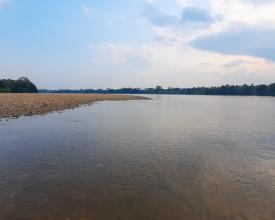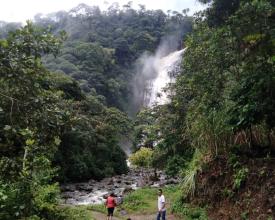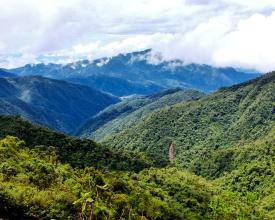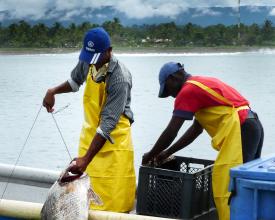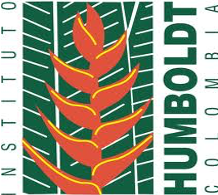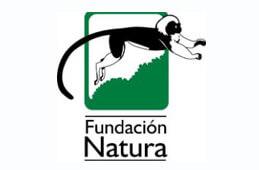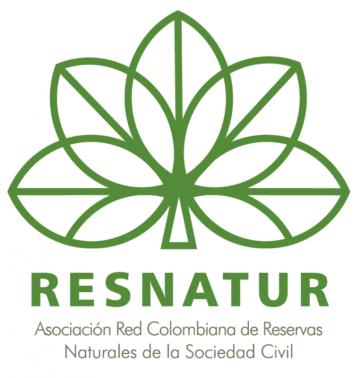
Au-delà des zones protégées : la reconnaissance des OECM en Colombie
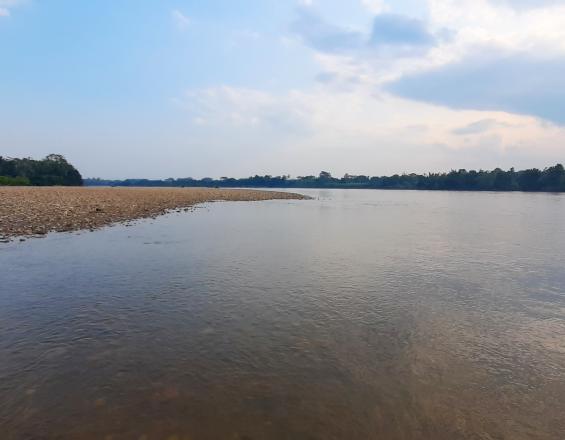
La Colombie a mis en œuvre diverses stratégies de conservation. Certaines de ces stratégies ont une base juridique, tandis que d'autres peuvent être regroupées en zones de conservation de facto.
Dans ce contexte, quatre ateliers ont été organisés dans les régions colombiennes, et 27 cas ont été évalués en tant qu'"OECM potentielles" (juin 1019 à août 2021). L'équipe de mise en œuvre a élaboré un questionnaire pour recueillir les informations requises et essentielles de chaque cas et a évalué s'ils sont conformes à la définition de l'OECM et aux quatre critères principaux. Par la suite, 8 des 27 cas ont été sélectionnés pour un travail plus approfondi (plans de renforcement) afin d'améliorer les éléments dont ils ont besoin pour répondre à la définition et aux critères de l'OECM.
En outre, une procédure nationale a été conçue et approuvée par le ministère de l'environnement pour permettre la notification des OECM à la base de données mondiale sur les OECM.
Contexte
Défis à relever
Les principaux défis sont que l'OECM devra être reconnue et incluse dans la planification ou la politique, et que la procédure nationale de notification des OECM colombiennes au WCMC fonctionne de manière adéquate.
Emplacement
Traiter
Résumé du processus
Les deux éléments constitutifs interagissent complètement. Afin d'alimenter la base de données du WCMC, il est nécessaire d'identifier la zone potentielle de l'OECM, d'appliquer les critères. Nous avons adapté une méthodologie participative qui a défini une série de questions pour chaque critère et ses composantes en fonction du contexte colombien, ce qui permet d'analyser la cohérence de la zone avec les critères de l'OECM. En fonction de cette vérification, il est possible de faire un rapport au WCMC.
Blocs de construction
Identification et solidité de l'OECM en Colombie
Au cours des 60 dernières années, un grand nombre d'ayants droit en Colombie ont encouragé la gestion durable et la conservation de la biodiversité de leurs territoires au-delà des zones protégées, même si leurs efforts de conservation n'ont pas été reconnus comme des éléments importants de l'aménagement du territoire respectueux du climat et qu'ils n'ont bénéficié que d'un soutien gouvernemental très limité.
L'objectif principal du projet est de renforcer et de rendre visibles les initiatives de conservation et de production durable, culturellement riches et socialement diverses, mises en œuvre par différents acteurs colombiens, afin de contribuer à un développement durable qui n'appauvrisse pas le patrimoine naturel du pays.
Comme leur identification en tant qu'autres mesures de conservation efficaces par zone (OECM) permet de visualiser ces efforts, Resnatur et ses partenaires travaillent depuis plusieurs années à l'adaptation des critères d'identification des OECM au contexte colombien, ainsi qu'à 27 initiatives, conformément au cadre international.
Ce projet contribue à la mise en œuvre en Colombie de la décision 14/8 de 2018 de la Convention sur la diversité biologique qui "encourage les Parties et invite les autres, en collaboration avec les peuples autochtones et les communautés locales, à appliquer ... ...des conseils sur les OECM" ; ... "Identifier les OECM et leurs diverses options au sein de leur juridiction ;"
Facteurs favorables
- L'adaptation du cadre international et en particulier des critères OECM des lignes directrices de l'UICN et de la décision 14/8 de 2018 au contexte colombien.
- L'application des critères de l'OECM au cas par cas.
- Le développement de deux processus méthodologiques pour appliquer les critères de l'OECM et identifier les éléments à renforcer.
Leçon apprise
- Le cadre de l'OECM permet de reconnaître d'autres formes de conservation et de gouvernance.
- Le renforcement des capacités est nécessaire pour appliquer les critères de l'OECM à plus grande échelle.
- Les autorités nationales devraient être impliquées dans la discussion sur la manière d'appliquer les critères.
- Davantage de ressources seront nécessaires pour identifier les OECO et suivre les résultats en matière de biodiversité.
- Les OECM doivent être des zones présentant une grande valeur en termes de biodiversité. Il est nécessaire de développer des méthodologies de suivi participatives.
- Les OECM sont une occasion d'accroître la connectivité, l'efficacité et l'adaptation au changement climatique des systèmes de zones protégées.
- Les OECM sont des éléments clés pour atteindre les objectifs du cadre pour la biodiversité après 2020.
L'itinéraire national de notification de l'OECM au WCMC
L'équipe du projet a travaillé avec le ministère de l'environnement pour construire et mettre en œuvre la route nationale pour la notification de l'OECM et la soumission au WCMC. Cet itinéraire a été conçu par le ministère de l'Environnement, en tant que point focal de la CDB pour la Colombie, le Programme de microfinancements du FEM en Colombie et le projet. Il est structuré de manière à garantir la validation de chaque OECM potentielle par le gouvernement (ministère de l'environnement), la société civile (une ONG telle que Fundación Natura) et l'Institut Humboldt lié au ministère avec le soutien scientifique nécessaire. Ces trois entités constituent le groupe de coordination de l'itinéraire. Des évaluateurs externes et des autorités régionales participeront à la validation. Elle comprend l'évaluation individuelle de chaque OECM potentielle par trois vérificateurs qui travaillent indépendamment les uns des autres et envoient leur évaluation au groupe de coordination qui établit un accord consensuel sur la conformité ou non de la zone aux critères OECM et peut être soumise par le ministère pour être incluse dans la base de données WCMC. Le projet a également permis de renforcer les capacités des vérificateurs nationaux, qui évalueront si les OECM potentielles répondent aux critères.
Facteurs favorables
La Colombie n'a pas signalé l'OECM existant à la base de données WCMC. L'une des principales réalisations du projet est que deux cas d'OECM ont déjà été approuvés par la voie nationale et que le ministère enverra sous peu les exigences pour le processus de vérification WCMC.
En outre, ce projet contribue à la mise en œuvre en Colombie de la décision 14/8 de 2018 de la CDB : "Soumettre des données sur les OECM au Centre mondial de surveillance de la conservation du PNUE pour inclusion dans la base de données mondiale sur les zones protégées".
Leçon apprise
L'effort conjoint pour construire et mettre en œuvre la route nationale, qui est facile à appliquer, renforce l'approbation sociale de l'OECM et l'intérêt des titulaires de droits et des détenteurs de patins à faire rapport au WCMC.
Il est important de souligner que la Route nationale a été conçue et construite grâce à un effort conjoint entre de multiples parties prenantes.
Le rapport national représente une étape importante dans la reconnaissance formelle de la conservation de la biodiversité, au-delà des zones protégées, en Colombie. Il contribue aux engagements internationaux pris par la Colombie, tels que la CDB, les objectifs de développement durable (SDGs), les objectifs d'adaptation au changement climatique et le cadre Post 2020, entre autres.
Ressources
Impacts
La mise en œuvre de la définition et des critères de l'OECM dans le cadre du projet est un exercice pratique qui a conduit, dans chaque cas, à une analyse réflexive sur la gestion de la zone par les acteurs locaux, menée dans ce cas lors des ateliers régionaux. Comme cela a été réalisé au cas par cas, l'analyse approfondie des problèmes et le partage d'expériences avec d'autres participants confrontés à des défis similaires ont permis d'enrichir leur vision et leurs perspectives et de susciter une appropriation encore plus grande de leurs zones.
Aux niveaux national et régional, les OECM sont incluses dans le cadre mondial pour la biodiversité post-2020 et la Colombie a élaboré un plan national d'adaptation au climat. Ce projet a permis aux autorités environnementales régionales, au ministère de l'environnement et à d'autres acteurs gouvernementaux et non gouvernementaux de la conservation et du changement climatique de s'engager et de développer leurs capacités en matière d'OECO.
La Colombie étant l'un des premiers pays d'Amérique latine à mettre en œuvre les critères OECM, nous avons désormais la capacité et la possibilité de partager nos expériences avec d'autres pays présentant des contextes socio-économiques similaires et de contribuer aux discussions mondiales qui enrichissent les perspectives de conservation in situ.
Bénéficiaires
8 organisations communautaires et gouvernements locaux dans plusieurs régions colombiennes qui ont réservé des zones de leur territoire. 120 personnes ont acquis la capacité d'appliquer les critères de l'OECM et de mener la vérification nationale de l'OECM.
Objectifs de développement durable
Histoire
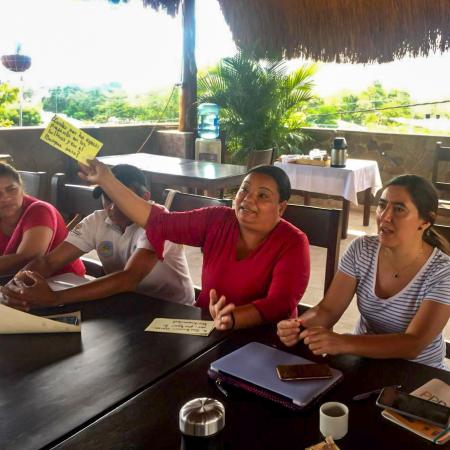
Bénéficiaire 1. Association des femmes unies de San Isidro (Amusi)
Depuis 2014, l'Association des femmes unies de San Isidro (Amusi) protège et gère les six propriétés qui constituent la zone de conservation-production de Salto Topacio, qui compte 30 ha de forêt sèche et d'importantes sources d'eau. La zone est immergée dans une matrice de cultures agroforestières (76 ha). À travers la culture de l'igname, l'association cherche à faire valoir les droits des femmes au travail, afin qu'elles puissent prendre leurs propres décisions, dans un contexte de violence et de déplacement accentué au début de ce siècle. La validation des critères a clairement montré les points à renforcer. Dans ce cas, la protection de la ressource en eau est urgente, car elle est essentielle au bien-être de la communauté de San Isidro. Les actions prioritaires ont été orientées vers les bonnes pratiques de gestion de l'eau et des écosystèmes, et le renforcement de la gouvernance pour une gestion plus participative et inclusive.
Bénéficiaire 2 : le parc naturel municipal d'Andakí
Le parc municipal d'Andakí (MNP) se trouve dans la municipalité de Belén de los Andaquíes, dans la région de l'Amazonie colombienne, qui conserve des zones stratégiques depuis plus de 20 ans afin de préserver leur biodiversité. Ce processus de conservation implique activement les acteurs locaux et a donné lieu à la création de neuf parcs naturels municipaux, dont le PNM d'Andakí. Le PNM d'Andakí couvre une superficie de 26,7 km2 et a été reconnu par le gouvernement local en raison de sa biodiversité, de ses services écosystémiques et de ses contributions importantes au développement municipal, ainsi que de son rôle dans le maintien de sites d'importance historique et culturelle.
Le PNM d'Andakí a été considéré comme une OECM potentielle car, en Colombie, les gouvernements locaux ne sont pas en mesure de déclarer ou de gérer des zones protégées. Cependant, plus de 140 gouvernements locaux mènent des actions en faveur du patrimoine écologique et de la conservation afin de garantir la fourniture de services écosystémiques dans le cadre du développement durable de leurs territoires, et l'un des types d'action des gouvernements locaux a été la création et la gestion de zones de conservation municipales. Bien que ces zones ne soient pas reconnues dans le système national des zones protégées de Colombie, elles ont une forte fonction sociale et, dans certains cas, sont intégrées dans les processus de planification de l'utilisation des terres.
